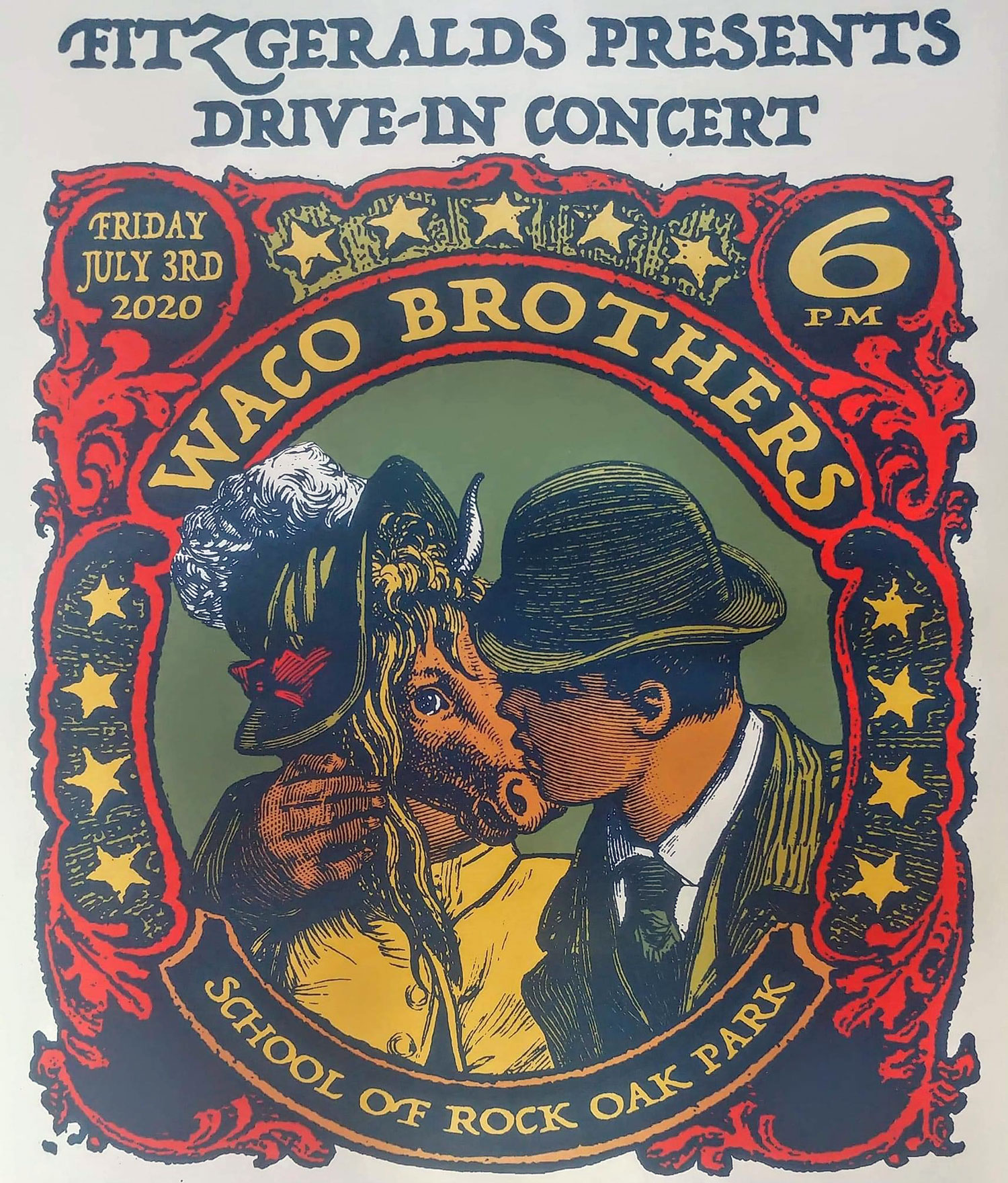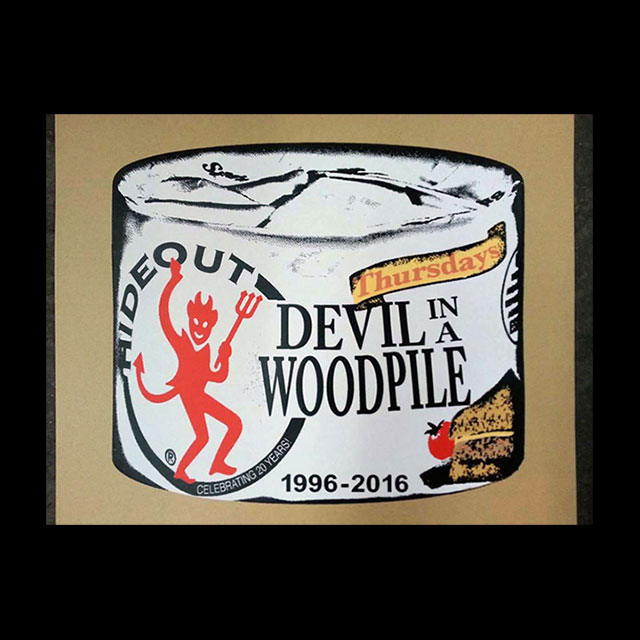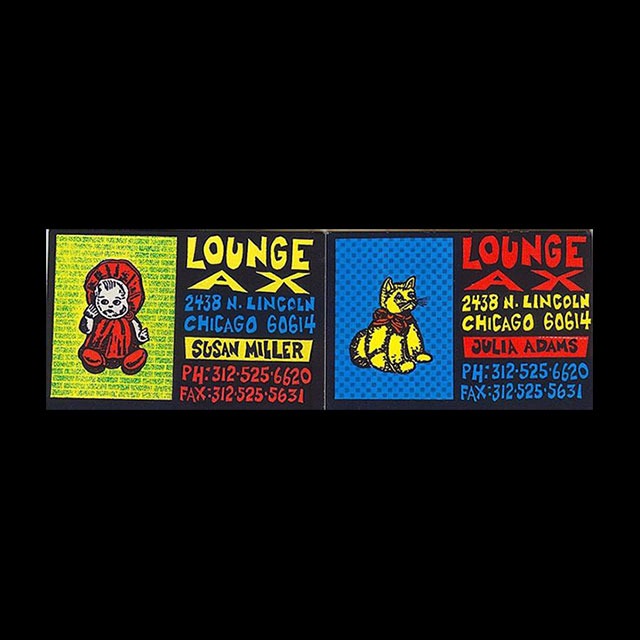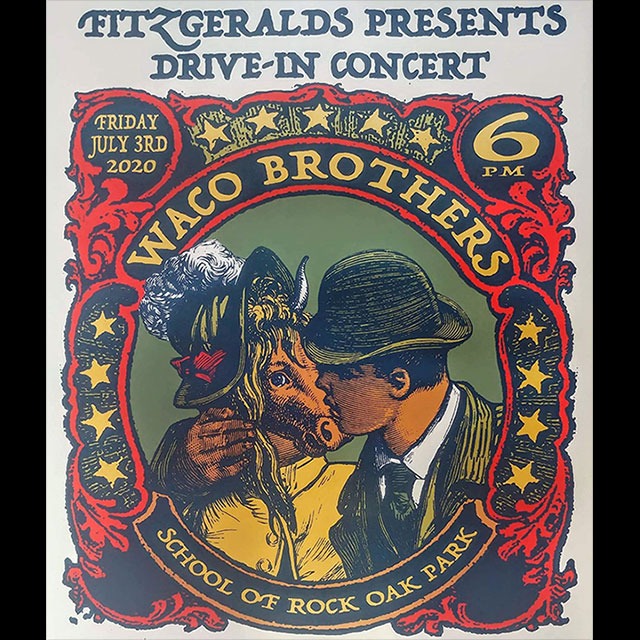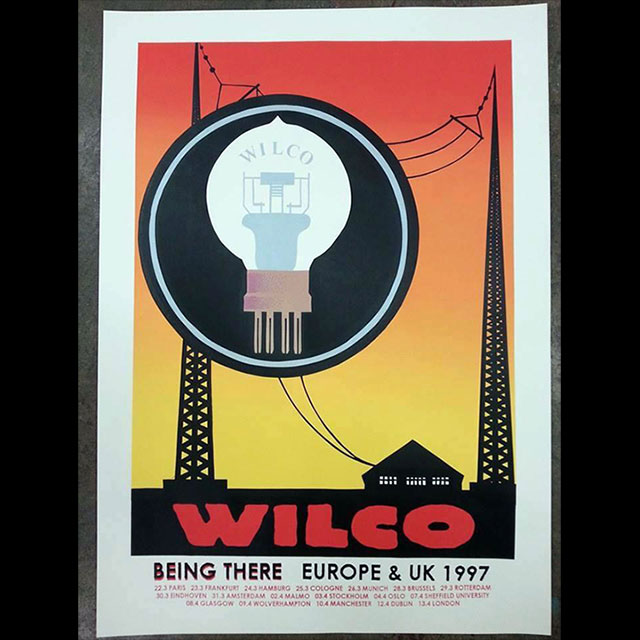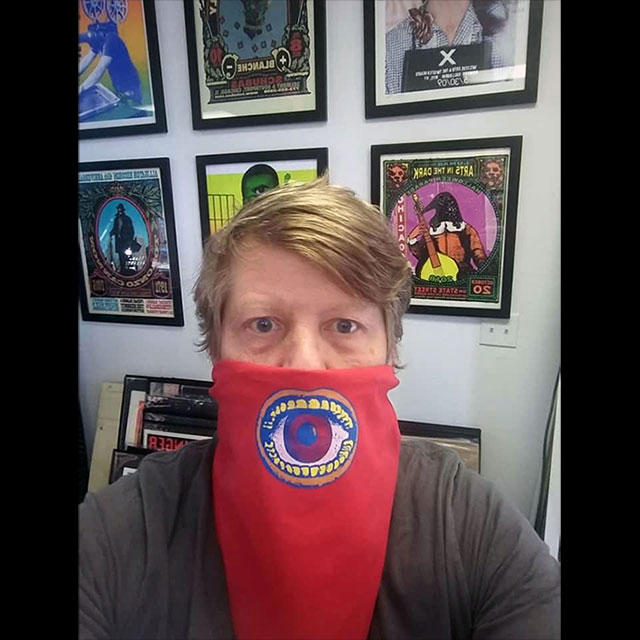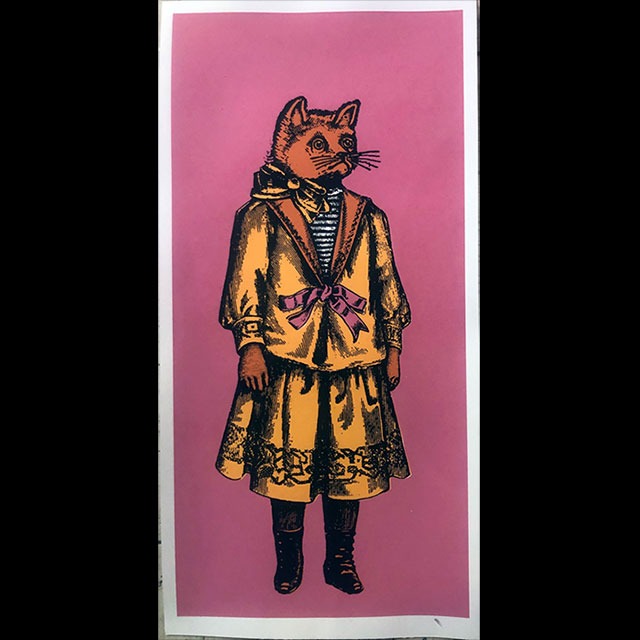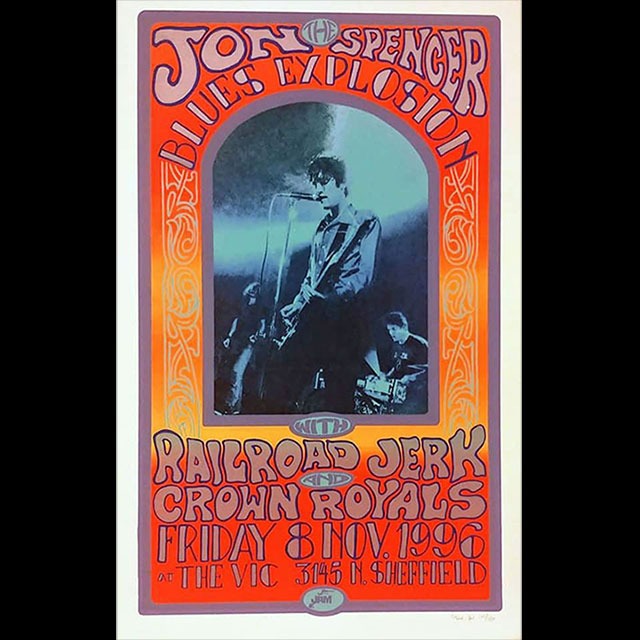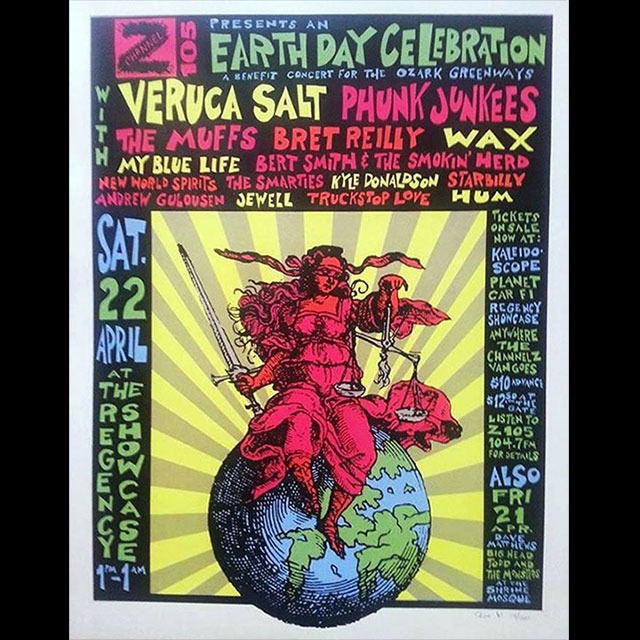A complete history of Chicago music from the 1990s through today cannot be told without mentioning the influence of Steve Walters. Though he isn’t a musician, his concert posters have arguably been just as vital to the scene as the influential albums that came from bands who played legendary and long-gone haunts like Lounge Ax, Double Door, and others. Acts like The Jesus Lizard, Liz Phair, Urge Overkill, and the Smashing Pumpkins emerged from the Chicago scene to receive national acclaim — and they all came from the same world as Walters and his Screwball Press, founded in 1991.
Walters is a self-taught artist from Hinsdale who moved to Chicago in 1986 after going to college in Iowa to study sociology. He was influenced by his maternal grandfather, a commercial artist, to follow a similar course.
A few months ago, FitzGerald’s co-owner Will Duncan approached Walters about doing an art show to highlight his work — the first-ever art exhibit for the Berwyn music venue. A couple days after Walters agreed to it, Duncan learned that he was shutting down Screwball Press, making the exhibit all the more significant.
Walters talked to Chicago about the upcoming show, which will kick off June 29 with performances from Jon Langford & his Fancy Men and others, and will run through the month of July.
In the interview, Walters, 61, mentioned that the recent death of Steve Albini at the same age influenced his decision. The May 7 death of Albini, the internationally renowned sound engineer who produced albums for many of the same bands Walters did posters for over the years — along with Shellac, the band Albini fronted — made Walters realize the importance of “doing something else before it’s too late.”
Of course, Walters is not going into accounting. He’ll still do posters for personal favorites like Robyn Hitchcock and for events like the upcoming 40th anniversary of Pravda Records, but his art focus is changing.
FitzGerald’s has never hosted an art show — what’s it feel like to be the first artist to have an exhibit there?
It’s an honor. I hope it goes well with their clientele.
It doesn’t sound like he (FitzGerald’s co-owner Duncan) had to twist your arm very hard?
No, not at all. I’m trying to concentrate more on doing shows.
I know you just had a show in April that featured your grocery store signs. Has there been an increase in show activity lately from you?
There has. I never really in the past sought it out but I’ve been very lucky. A lot of people seem to like the stuff.
Is there anything else to be read into having more shows lately?
I’m not quitting making art, but the opening of the show at FitzGerald’s is going to be like a funeral for Screwball Press.
Are you shutting it down?
Yeah. I turn 61 this year and I’m kind of old for the hipster scene, the music scene. There’s still plenty of bands my age around but I don’t feel like I’m bringing anything new to the table for the last two years. I’ve been marking time, wondering what the hell else I’m going to do because I don’t have any other skills that are useful in this world.
You’ve been described as the godfather of screen-printed rock ‘n’ roll posters in Chicago — have there been lots of imitators over the years?
No, I wouldn’t say imitators, not in Chicago. Chicago doesn’t work like that. There’s a sense of competition between the different artists, most of whom I taught how to print, but the competition here is the type that makes you do your best work. It’s not backstabbing. It’s not the ugly type of competition, it’s the healthy type of competition.
What would you tell someone who hasn’t seen your work about what separates your work from others?
I don’t know (laughs). I’ve had several different styles over the years. When I first started I was kind of doing my version of what I saw Frank Kozik doing, who is kind of the national godfather. I had people working for me who were great artists like Jay Ryan and Kristen Thiele and I felt like I needed to step up my game. So I started taking old ads and product designs apart and putting them back together.
You never went to art school –
No, I studied sociology but it’s kind of in my blood to make art.
Was that the influence of your grandfather?
Yes. My mom’s dad was a commercial artist downtown and did a lot of hand-drawn illustrations for catalogs and did oil paintings on his own.
In the late 1980s and 1990s you were hanging around Lounge Ax a lot. How important was that scene to your artwork?
It was huge. I started doing flyers because I had friends in bands that would come through town and most of them played there. I was trying to get people out to see my friends and back then the posters were mostly all Xeroxed flyers. I wanted to use color and found a way to do that. I guess it worked because they loved them at Lounge Ax and I was at the right place at the right time when major labels started poking around Chicago looking for the next Seattle. Bands wanted to get noticed and I was getting a lot of work. I was still learning but suddenly doing work for Capital Records and major acts.
There’s been a couple stories recently about how the Chicago music scene is hot again and reminds some people of the 1990s.
Really? I guess I’m out of touch. (Laughs). I don’t leave my house much.
You also did a lot of work for Shellac over the years. I’m assuming the recent death of Steve Albini really impacted you?
I have, yes. That [Albini’s death] kind of helped my decision to do something else before it’s too late.
Which is what?
The collages that I’ve been doing, which have nothing to do with screen printing. Screen printing and running the business [Screwball Press] is a lot of stress, which isn’t good for your heart.
Can you tell me a bit about the collages?
I’ve been collecting those hand-painted grocery store signs and I tear them apart by hand and piece them back together and make them say weird things or abstract things. That was all the stuff exhibited in April at The Dime… I’m trying to approach this with the same work ethic that I had with Screwball, treat it like a job. It’s not something you can just do once in a while and hope that you sell something.
You’re known for your music posters but some of your work has political and social commentary. Can you touch on that?
I’ve had periods of that, yeah.
Was it a case of something that annoyed you enough and inspired you to do something?
Yeah, exactly. A lot of that was during the George W. Bush years.
That’s interesting because a lot of people would welcome Bush now.
Right. (Laughter). Almost.
Your posters were featured prominently in the 2000 film High Fidelity. Any other big career highlights stand out in your head?
It’s taken me to a lot of places that I didn’t expect. I got to spend time with Howard Finster and spend the night at Paradise Gardens [his site in Georgia]. That was a pretty special day.
Meeting my heroes like Chris Ware and Skip Williamson, and Bob Burden, who did Flaming Carrot.



